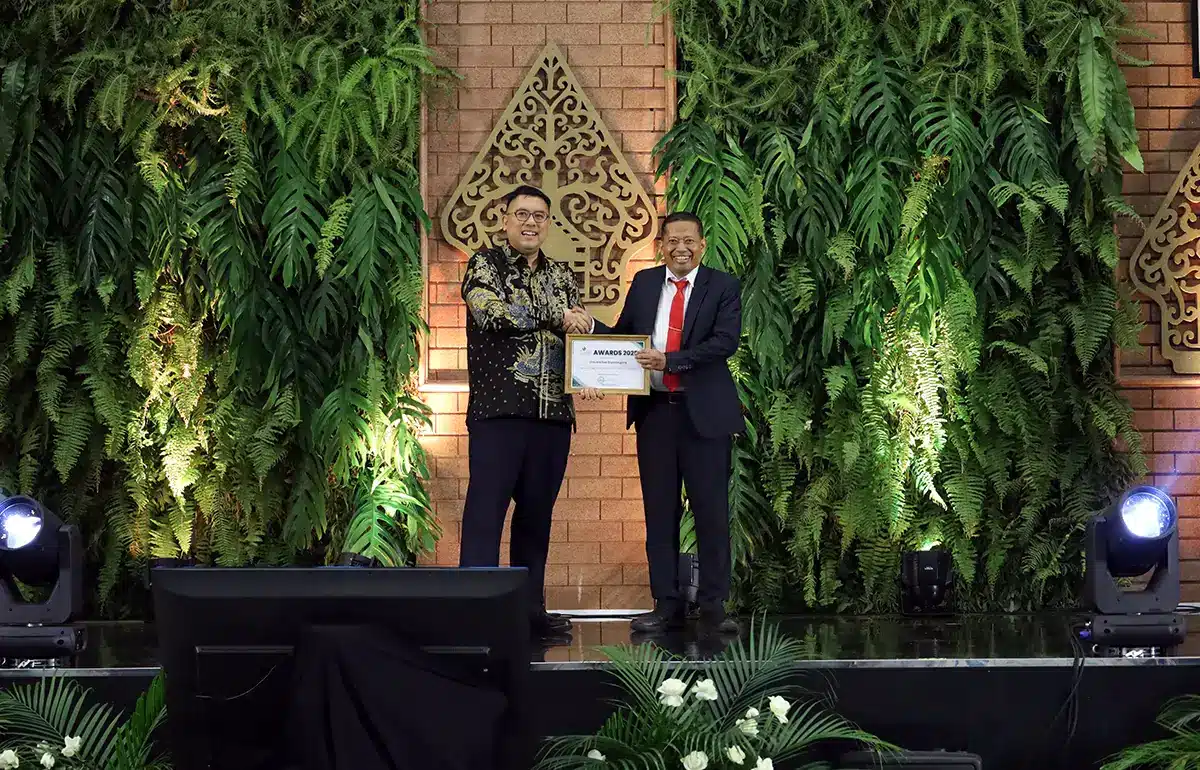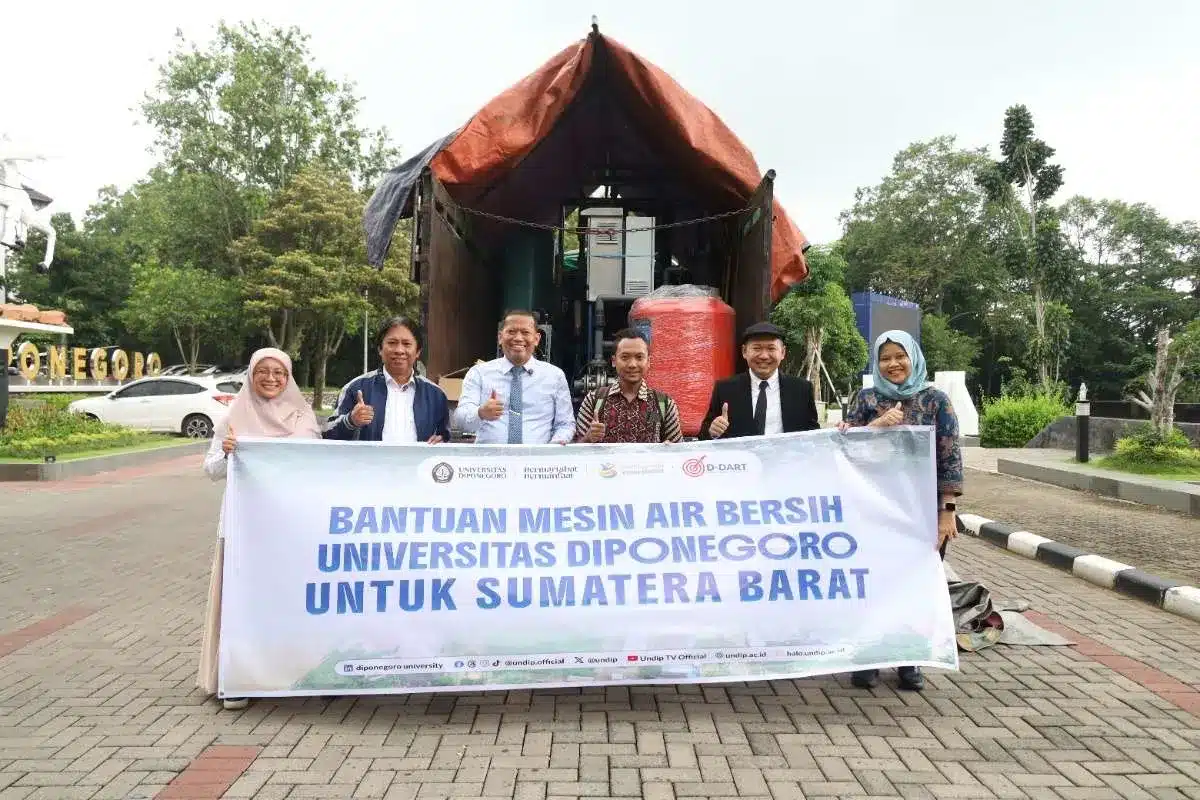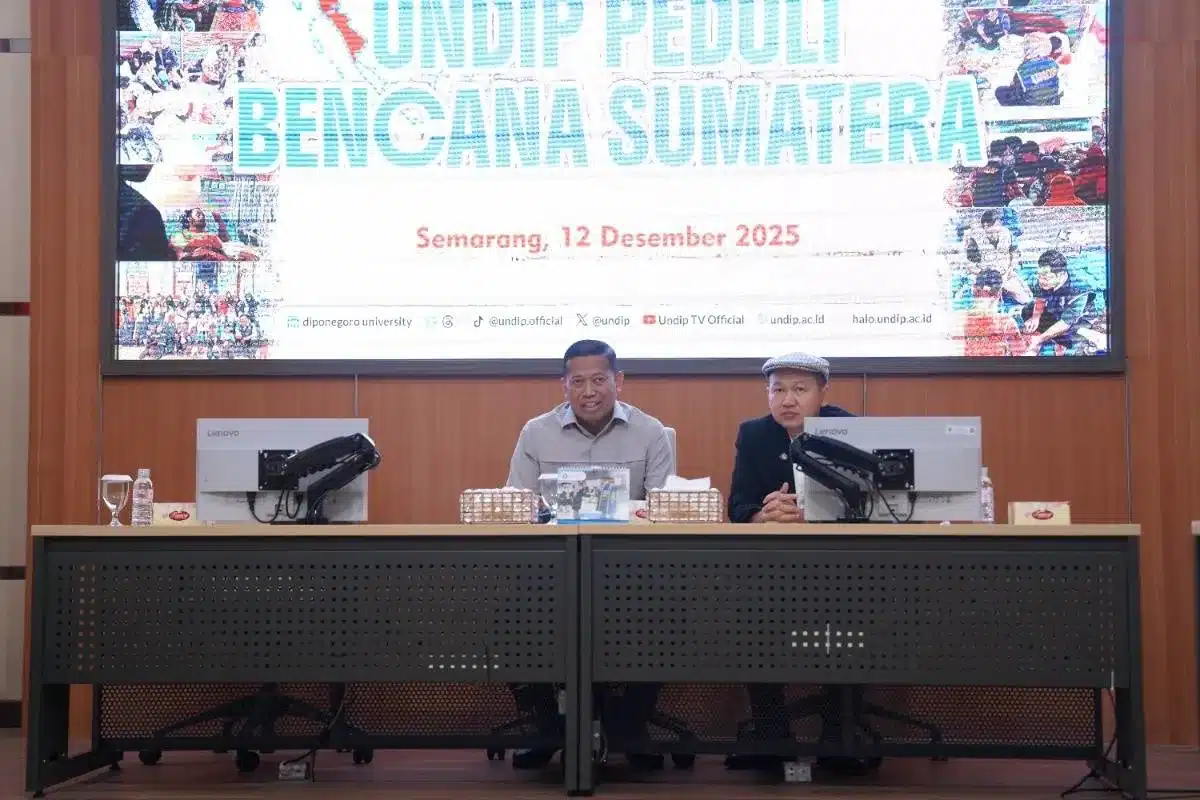Diponegoro University once again held a presentation of scientific papers by three prospective Undip professors organized by the Diponegoro University Board of Professors on Wednesday (21/6). The three prospective professors are Dr. Sri Hartini, S.T., M.T. (Faculty of Engineering), Dr.Eng. Agus Setyawan, S.Si., M.Si (Faculty of Science and Mathematics), and Dr. Nanik Trihastuti, S.H., M.Hum. (Faculty of Law).
In her paper on Lean and Sustainable Manufacturing: Roles and Challenges in Small and Medium Enterprises in Indonesia, Dr. Sri Hartini discussed the company’s production process in Indonesia in general, which is not efficient, and the waste is not managed properly, especially in Small and Medium Enterprises (SMEs). Indonesia’s SME manufacturing system must continue improving efficiency and waste management. Lean and sustainable manufacturing is a system that creates value for customers by consistently eliminating waste and adopting environmentally friendly, economically feasible processes and safe for employees to produce green products that enhance social performance. So far, lean and sustainable manufacturing integration has been carried out but still partially.
“Lean and sustainable manufacturing can be applied to the tofu food sector SMEs. The evaluation of the tofu food sector SMEs stated that there was a waste on movement and disability, physical workload, water consumption, waste, and climate levels exceeded the threshold. The biggest inhibiting factor is the high investment, maintenance, and technology costs while they have limited funds. Lack of training, expertise, and employee education also affect the SMEs’ declining ability. The biggest driving factor is financial capability and government support and incentives. The pentahelix collaboration is expected to be an alternative solution for implementing lean and sustainable manufacturing in SMEs,” explained Dr. Sri Hartini.
While the scientific work of Dr. Nanik Trihastuti regarding Distance-Water Fishing and Its Impact on Developing Countries: An Overview of the Effectiveness of International Law revealed that fishing activities in distant waters (distant-water fishing) carried out by many developed countries harm the countries instead. The massive fishing activity was triggered, among other things, by the provision of subsidies for fisheries by developed countries to their fleets of ships which were even equipped with fishing gear that was not environmentally friendly.
“A country is considered to have jurisdictional authority according to international law if that country has the competence to prosecute or punish because of the occurrence of something or negligence that qualifies as an offense according to the national law of the country concerned. The state is also recognized as having the authority to handle any delict that occurs within the boundaries of its territory, regardless of the nationality of the perpetrators. A country’s submission to the needs of the international community and obedience to international law is an absolute requirement for creating an orderly international community and realizing international order,” said Dr. Nanik.
Dr. Eng. Agus Setyawan, S.Si., M.Si from the Faculty of Science and Mathematics presented the paper entitled The Role of Earth Physics in the Development of Geothermal Energy and the Environment in Indonesia. Indonesia is a region traversed by the confluence of 3 tectonic plate lines, namely the Indo-Australian, Eurasian, and Pacific. This condition causes Indonesia to be in the Ring of Fire zone of 7000 km. The Ring of Fire zone has two positive and negative side effects. The positive effect is that Indonesia has natural resources such as the potential for hydrocarbons, mineral mining, and geothermal energy. On the other hand, there is the potential for natural disasters such as earthquakes, volcanic eruptions, landslides, and land subsidence.
“From gravity measurements, it was found that the rocks on Mount Ungaran’s body consist of andesite, which has a 2.39 kg/m3 density. It is related to the body of Mount Ungaran Muda and basalt rock with a density of 2.64 kg/m3 which is related to Mount Ungaran Tua. The emergence of geothermal manifestations on Mount Ungaran is related to faults. The up-flow zone is around the collapsed wall where the fluid moves upward but does not penetrate the surface, so it descends and appears on the surface through the fault zone as fumaroles, hot springs, and alteration zones. The numerical simulation results show that the geothermal potential at Mount Ungaran ranges from 2.3 MW to 40.4 MW depending on the assumption of reservoir depth,” he explained. (LW-Public Relations)










